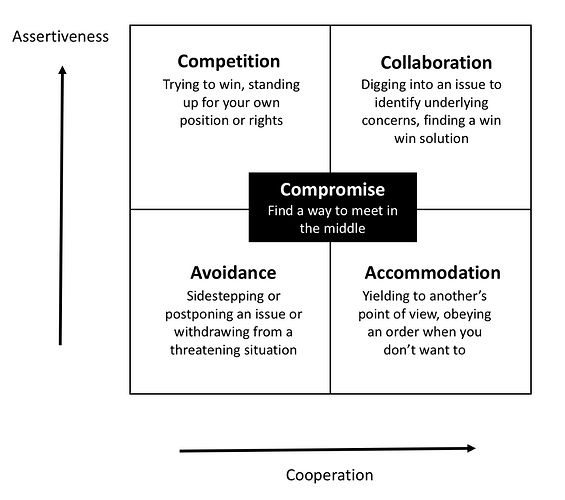Different people behave differently in stressful situations like a conflict. People’s behaviors are influenced by the culture in which they were raised, so when a conflict situation happens people react unconsciously in many cases. To master conflict resolution skills one needs to understand the spectrum of default reactions that people have. This awareness enables one to assess others behaviors more accurately, and consciously select an appropriate conflict resolution approach.
The Thomas-Kilmann Model
Thomas–Kilmann Conflict Model provides a set of behavioral strategies that people use in conflict situations. The model is assumes that there are two primary styles of behavior during a conflict:
Cooperativeness
This happens when one seeks for cooperation and common grounds. Cooperative users know how to listen, they do not impose their own opinions, and care about interpersonal relationships.
Cooperative users usually believe that:
- It is important to consider other people’s needs and values.
- Collaboration is a strength, not as a weakness.
- Collaboration allows them to accomplish their personal goals.
Assertiveness
Assertive users defend their personal interests. They think that any conflict has only two options, either win or lose. They are emotionally stable, assertive, and start or join a conflict.
Assertive users usually believe that:
- It is important to consider their personal needs and values first.
- They need to express their own opinions and views and others are interested in them.
- The community will respect them for expressing their interests, rather than sanction them somehow.
This is a fragment of a draft of the book “Lessons Learned While Working On Stack Overflow”. Read the full book on kindle or the paperback version.
